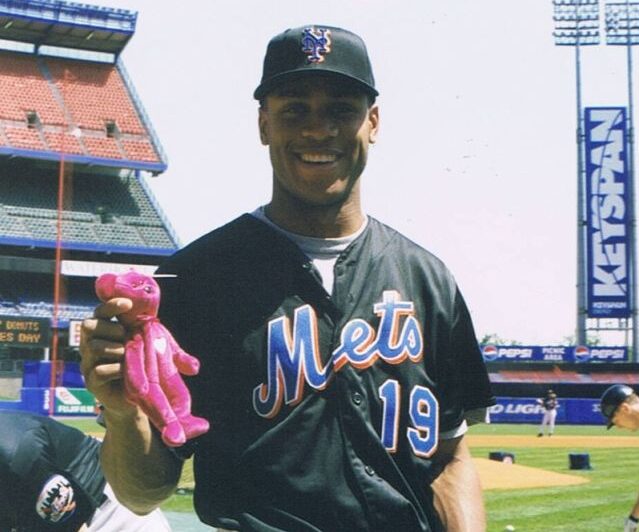
This offseason, we’ve been looking at the Mets’ history with free agency. We began with the team’s best signings. Now we’re saving the worst for last. At No. 10 is an outfielder whose second act with New York was nothing like his first.
The Mets have not been averse to reunions. Rarely has it worked out. José Reyes, Jeromy Bernitz, Kevin McReynolds are just a few failed retreads.
Roger Cedeño‘s first stint in New York lasted one season, but it was a terrific one in 1999. For a team that made its first postseason appearance in 11 years, Cedeño set what then was a club record with 66 stolen bases. He also had a slash line of .313/.396/.408.
The Mets used Cedeño and his increased value as a trade chip, dealing him a package that resulted in the acquisition of left-handed starter Mike Hampton and outfielder Derek Bell.
As brilliant as the move was by general manager Steve Phillips to acquire Cedeño from the Los Angeles Dodgers prior to the ’99 season, it was equally as misguided to bring him back before ’02. In those subsequent two years with the Mets, Cedeño hit .263/.319/.362 with 39 steals.
Coming off a year in which the Mets offense was the major league’s worst, Phillips was determined to make several offseason splashes aimed at fixing the lackluster run production of 2001. Cedeño was inked to a four-year, $18 million deal with the hopes he could be the same spark to the lineup as he was in 1999.
Although fellow newcomers Mo Vaughn and Roberto Alomar (can’t forget the Bernitz revival too) were high-profile faces in the disastrous 2002 campaign, Cedeno was not immune from drawing the ire of Mets fans growing increasingly frustrated. There was plenty of blame to go around. Several played well below their potential, with Cedeño among the most underwhelming.
His salary wasn’t the only thing that got bigger. There was visible weight gain — not exactly the ideal training plan for a supposed speedster. It didn’t help that his hitting declined too, with a horrid on-base percentage of .318 and an OPS+ of 78. Did we mention his fielding was terrible also? Cedeño’s defensive WAR was -1.0 with -10 defensive runs saved.
It didn’t get better in 2003 — both for the Mets and for Cedeño. That low stolen base total? It got lower: from 25 to 14. His on-base percentage and OPS+? Both went up…to .320 and 84. And he was still lost in the outfield.
There was nothing to justify keeping him past ’03, even if it meant eating the remainder of his contract. The Mets eventually cut their losses. Just prior to Opening Day 2004, Cedeño was traded to the St. Louis Cardinals. Just over a year later, he was out of baseball.
Roger Cedeño is proof that a second look can lead to a bad final impression.















